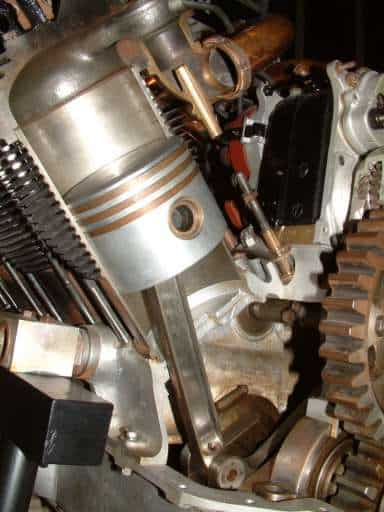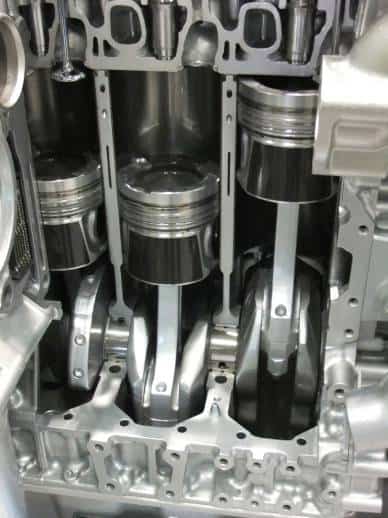If you are hearing a scary noise from your vehicle’s engine that sounds like a loud banging, it could be a rod knock. We know how frightening this is and can make you worry endlessly as you start ruminating on engine repair costs. However, how long can you drive with rod knock? More importantly, can you drive with a rod knock at all? Don’t fret! This blog will clear all your doubts about rod knocks.
There is no straight answer to this question. Once the rod starts knocking, your engine could give away the next time you go for a drive or could run fine for several months or even years.
Although it depends on the overall condition of your vehicle and other factors, eventually your engine will seize if you keep driving with a rod knock.
Table of Contents
What Is Rod Knock And What Causes It?
A rod knock is a sound of your vehicle’s rod(s) knocking against the crankshaft when it rotates. It is a deep rapping noise that arises due to rod-bearing wear and tear. Getting a rod knock indicates that there is extra clearance for the connecting rod bearings which creates unnecessary movement. So, when the piston changes its direction, one metal piece hits another, thus, resulting in the knocking sound.

It is quite easy to identify a rod knock. You will hear loud bangs from your engine as you rev it up and let off the accumulated gas. Often, you will get it when you let off the gas.
Several issues could lead to rod-knocking. They are as follows:
- Worn out rod bearings
- Low octane level
- Poor timing
- Bad air/fuel mixture
- Damaged knock sensor
- Malfunctioning belt tensioners/pulleys
- Lack of lubrication
- Particles present in the oil
- Excessive heat
How Long Can You Drive With Rod Knock?
There’s no proper answer to this question. Mostly, this isn’t something that corrects itself on its own. If you leave it as is, then the rod knock will lead to other problems like wrist pin issue, pistons, cylinder wall issues, etc. So, the amount of time you can go on driving your vehicle with a rod knock also depends on the engine’s overall condition and other parts.
As already mentioned, rod knocking occurs when the crankshaft journal, that connects the crank to the connecting rod of every cylinder, collides with the rod bearing. Once your car engine starts knocking, the rod might fracture without any prior warning. This could happen the next time you ride your vehicle. Or maybe it can keep going for several months or years. But, sooner or later the engine will yield in and leave you stranded somewhere if you don’t get the rod knock repaired.
Can You Drive With Rod Knock?
If the knocking is not that bad yet, is not there when the vehicle is idle, and you only need to drive your car to somewhere close, then you might choose to take the risk. Add some heavyweight gear oil in the crank and it should run fine. In case, only one of the cylinders is knocking, pull its plug out to reduce the pressure on the rod. This should lessen the knocking. Also, shift to 1500 rpm, lower the revs, and drive as slow as possible.

Driving with a rod knock is dangerous and should be avoided. We recommend you get your engine checked. And fix the rod knock as soon as the knocking surfaces to cause less damage to the parts, especially the crank. The problem will only worsen and eventually, damage your engine. At some point, your engine will give up, and then, you’ll end up with a hefty repair bill.
Note: Remember this is a temporary fix and is recommended only if you have no other option at hand. Putting heavier or thicker oil could mask the knocking sound but eventually, you’ll have to replace/repair the worn-out components. Also, it could lead to more damage which will increase the cost of fixing the problem.
How Do You Fix A Rod Knock?
The only way to fix rod knock is by rebuilding the engine. Here, you need to pull out the rods to replace the rod bearings. The rod may have damaged the crankshaft’s surface. In that case, you’ll need to polish your crank and turn it. Turning will grid down the crank’s journal making its diameter smaller so that any gouges on the surface are removed.
Then. run thicker rod bearings corresponding to the amount of crank turning. You can also consider replacing the main bearings. This is advised if other factors like a damaged oil pump have resulted in the rod bearing’s failure.
How Do You Prevent Rod Knocks?
1. Use High-Quality Gasoline: Start by upgrading the gasoline used. Get higher-quality gasoline with a higher octane rating because higher-octane fuels can usually withstand higher loads before combustion. Try finding one that also contains carbon cleaning additives which will prevent any further buildup on the parts of your vehicle’s engine (that would have affected timing)
2. Regularly Maintain Your Engine: Upgrade your engine with new wires and spark plugs.
3. Change Fuel Regularly: Make sure to change the fuel in your vehicle regularly. Also, look out for low oil levels since worn-out and low oil levels can lead to timing-related issues, poor lubrication, etc.
How Much Does It Cost To Fix A Rod Knock?
The cost of repairing rod knock depends on many other factors. Some of these factors are listed below:
- How long have you had the rod knock?
- How much damage has been caused?
- Do you have a high-performance engine?
- Is the engine salvageable?
The cost of the repair could be in the range of $2,500 to $4,000 if the engine has to be rebuilt. And if you need to replace the entire engine, that could go up to $10,000 or higher.
Final Thoughts
If you hear a knocking sound from your engine, the problem is likely a rod knock. We would advise that you shouldn’t wait. The longer you wait with engine problems like this one, the worse things become. We know that it could be a costly repair even if you attempt to do it on your own. But, dealing with it earlier, while you still have time, could save your engine. After all, it’s better to get your engine repaired than to break your bank to buy a new one.
